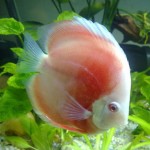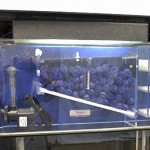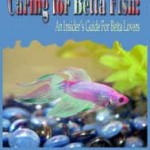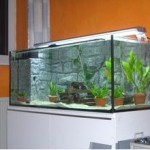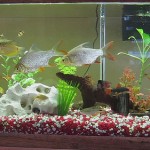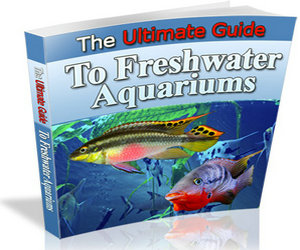
I am a relatively novice aquarist with a passion for corydoras catfish. About a year ago, we decided to get an aquarium for the house. My partner was going to get Cichlids as he had kept them before. However, I managed to talk him into getting a “community” tank with your normal run of the mill gourami, angels, barbs and like fish. My partner insisted on having corydoras and bristlenose. I acquiesced as I had gotten my planted community tank. He soon bought our second tank and purchased his cichlids and associated rocks and barren landscape.
Over the past year I have seen lots of fish come and go, but fell in love with the little bottom dwellers that are shy and seemed to wink at me. Of course it is not winking, but it made me feel special and so I fell in love with these gorgeous little critters. I started my collection with bronze cory’s, added pepper cory’s and then my favourites – sterbai’s. I have at least 6 of each of these. I also collected a pair of each of the following corydoras species – Haraldschultzi, Melanistus, Leucomelas, Barbatus, Davidsandi, Leopardus, Swartzi, Arcuatus and of course Pulcher (of which I have 4 – 2 pairs).
I read up about them and ensured that the temperature and the water conditions were ideal for my corydoras. It is very easy to maintain ideal water conditions for them as they don’t really put much bio-load on the system and require water changes much less frequently than most of our other tanks.
I kept the tank at a pH of around 6.8 – 7.0 and even as high as 7.4. The temperature is always around 23-24° C, a KH of 2 and a GH of 8. I ensure that there is never any ammonia or nitrites in the tank. Nitrates hover around 5-10 and up to 20.
I read all about corydoras breeding behaviour, but it is completely different to actually observe this first hand in your own tank. I read that cory’s often spawn after the first spring signs – cool pure water from the snow capped mountains entering into their rivers and streams. So after doing quite a significant water change of around 25% (40 odd litres in a standard 4ft tank of 175 litres) with water about a degree cooler than the temperature of the tank 23.8° C (tank was 24.8° C), I found the next day that my corydoras sterbai’s were exhibiting classical textbook breeding behaviour.
There were at least two males to the one female (at times 3 males). They would follow the female around and almost “box” her in. One of the males would then nudge her belly with his head and then swim over her. The female would then be seen with an egg or two clasped tightly pectoral fins or what they term her “egg basket”. She would then search the tank high and low for a spot to hide her eggs. These locations included the glass walls of the tank, the undersides of leaves and plant stems etc. My tank was literally covered with eggs, most of which unfortunately were eaten by gourami, bristlenose, angels etc.
I have had many spawning episodes since this one. My sterbai’s, bronze and pepper cory’s breed regularly and some have even survived and grown to adults in this peaceful community tank without any interference from us. I don’t know exactly how many have survived as I would have to completely strip the entire tank and take a head count to know. I would not do this to my wonderful fish. However, I have learned now how to “roll” the eggs from the side of the tank and have recently put these eggs into a hatching tank in an effort to hatch the young in a controlled environment. So far I have managed to hatch half a dozen “wrigglers” which I am currently trying to rear on liquid fry food. Wish me luck!






